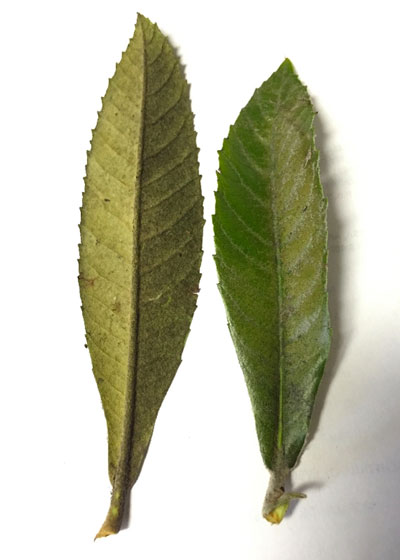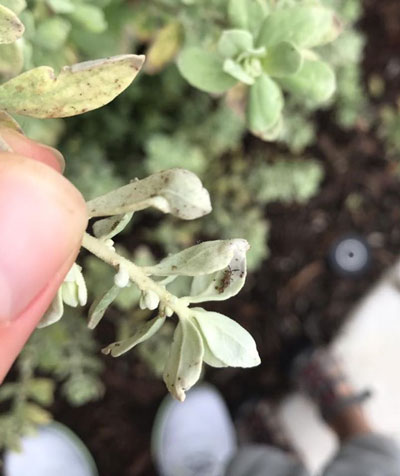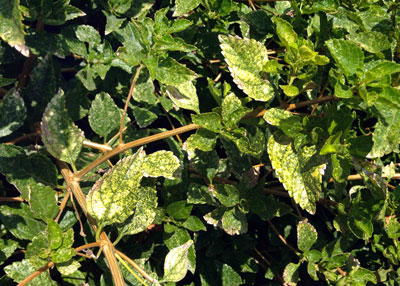Question of the Week Number 1: June 21, 2018
“Neil, what is causing the leaves of my loquat and several other plants to turn tan?”

Top of loquat leaf on right shows the fine tan mottling. Bottom of leaf discloses the true clues of lace bugs – their black droppings, and if you look closely enough, a couple of the lace bugs themselves.
Lace bugs have become more and more common over the past 25 years across Texas. They’re pinhead-sized pests with clear, cellophane-like wings and they inhabit the backs of host plants’ leaves.

Texas sage (ceniza) shows typical symptoms of lace bugs.

Lantana foliage shows dramatic impact of lace bugs.
Plants that are commonly affected…
Many types of plants are susceptible, most notably pyracanthas, azaleas, boxwoods, Boston ivy, bur oaks, chinquapin oaks, cotoneasters, Texas sage and lantanas.
Lace bugs have piercing-sucking mouthparts which they use to withdraw sap from plants’ leaves. Then they exude sticky honeydew secretions that coat leaves, stems and hard surfaces below. Sooty mold fungus grows in that honeydew substrate giving the coated areas an unsightly appearance.
Controls for lace bugs…
Lace bugs are fairly easy to control with many organic and inorganic insecticides. If you’re spraying, coat both top and bottom leaf surfaces and apply it with enough force that you cover the plants thoroughly. You can also use a systemic insecticide as a soil drench, although that will require two to three weeks to be effective. Affected leaves will not green up again, but new growth will be produced fairly quickly after you kill the pests.
